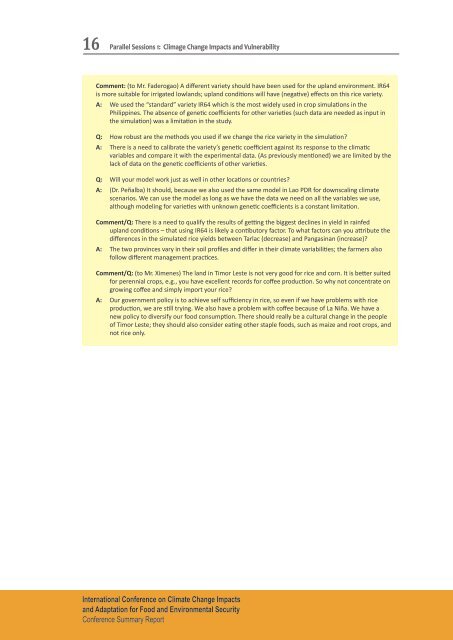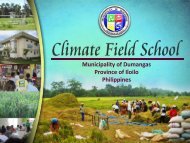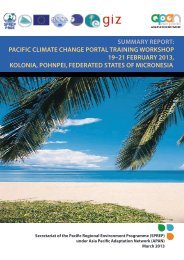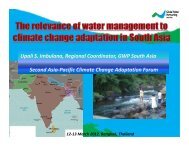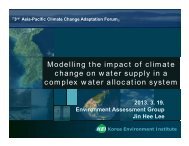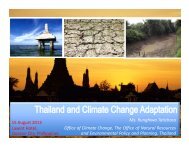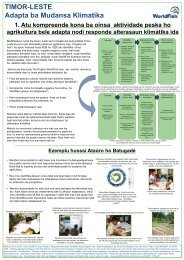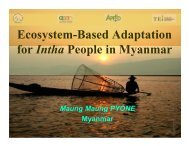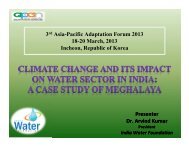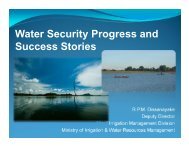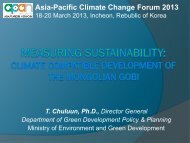PDF file (2.44 MB) - Asia Pacific Adaptation Network
PDF file (2.44 MB) - Asia Pacific Adaptation Network
PDF file (2.44 MB) - Asia Pacific Adaptation Network
You also want an ePaper? Increase the reach of your titles
YUMPU automatically turns print PDFs into web optimized ePapers that Google loves.
16Parallel Sessions 1: Climage Change Impacts and VulnerabilityComment: (to Mr. Faderogao) A different variety should have been used for the upland environment. IR64is more suitable for irrigated lowlands; upland conditions will have (negative) effects on this rice variety.A: We used the “standard” variety IR64 which is the most widely used in crop simulations in thePhilippines. The absence of genetic coefficients for other varieties (such data are needed as input inthe simulation) was a limitation in the study.Q: How robust are the methods you used if we change the rice variety in the simulation?A: There is a need to calibrate the variety’s genetic coefficient against its response to the climaticvariables and compare it with the experimental data. (As previously mentioned) we are limited by thelack of data on the genetic coefficients of other varieties.Q: Will your model work just as well in other locations or countries?A: (Dr. Peñalba) It should, because we also used the same model in Lao PDR for downscaling climatescenarios. We can use the model as long as we have the data we need on all the variables we use,although modeling for varieties with unknown genetic coefficients is a constant limitation.Comment/Q: There is a need to qualify the results of getting the biggest declines in yield in rainfedupland conditions – that using IR64 is likely a contibutory factor. To what factors can you attribute thedifferences in the simulated rice yields between Tarlac (decrease) and Pangasinan (increase)?A: The two provinces vary in their soil pro<strong>file</strong>s and differ in their climate variabilities; the farmers alsofollow different management practices.Comment/Q: (to Mr. Ximenes) The land in Timor Leste is not very good for rice and corn. It is better suitedfor perennial crops, e.g., you have excellent records for coffee production. So why not concentrate ongrowing coffee and simply import your rice?A: Our government policy is to achieve self sufficiency in rice, so even if we have problems with riceproduction, we are still trying. We also have a problem with coffee because of La Niña. We have anew policy to diversify our food consumption. There should really be a cultural change in the peopleof Timor Leste; they should also consider eating other staple foods, such as maize and root crops, andnot rice only.International Conference on Climate Change Impactsand <strong>Adaptation</strong> for Food and Environmental SecurityConference Summary Report


